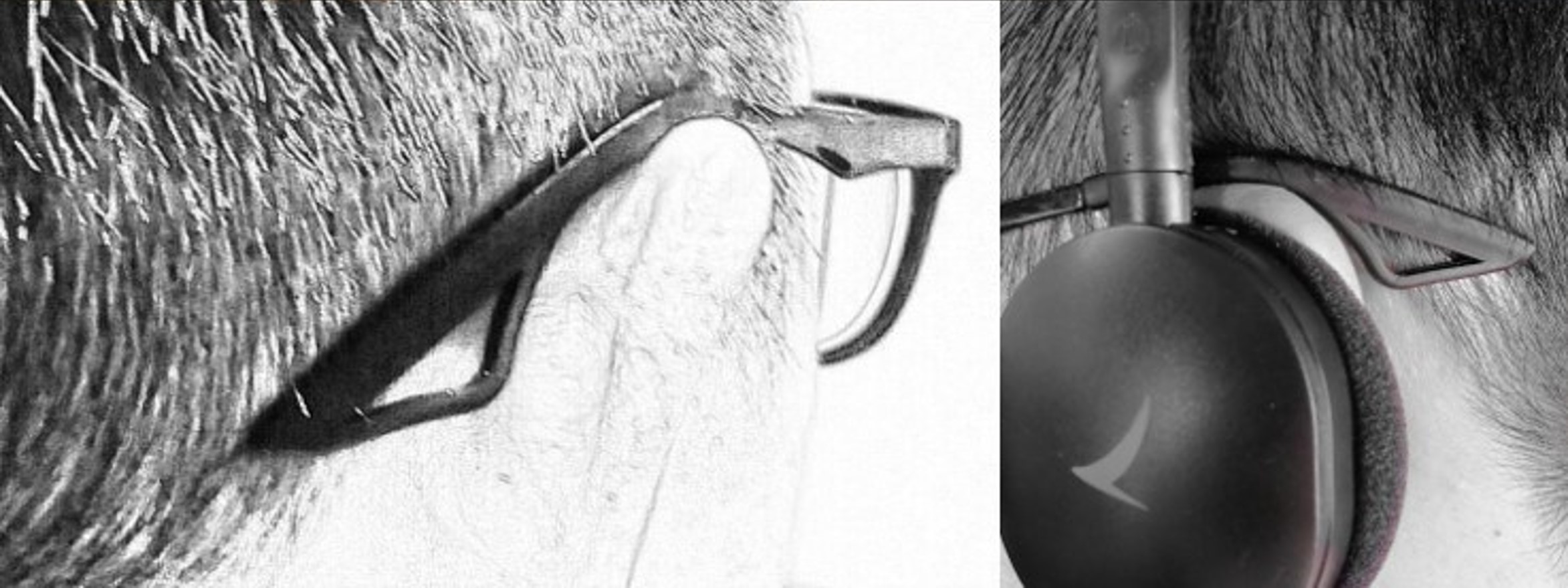Blog | What glasses don't hurt ears?
The most common answer is lightweight glasses but this is not necessarily the case. A lightweight frame that does not allow adjustment may still cause discomfort. The basic reason glasses hurt ears is that the part of the ear is too sensitive for the pressure that is applied. Hence ear pain is caused by pressure application and the point where it is applied. Most ear pain is caused by tightening the frame to support the weight of the lenses at the front so that the glasses do not slide down the nose. Unfortunately for some frames, bending the temple tip lower may result in painful ears.
Most frames are made of hard plastic or metal and the pressure exerted will be greater at the point of contact. Stiffer material also meant that more precise bending is needed to get the right amount of force so that the glasses doesn't slide and the ear doesn't hurts. However, if the temple tip which is in contact with the ears is made of softer material, the pressure will be less due to more even distribution of the forces as the material deforms. The anchor tip of Beta-Simplicity Vision and VASAC series eyewear is made of soft material and the loop is designed to deform and contour along the back of the ears for more even distribution of the forces. This will reduce the amount of pressure on the back of the ears resulting in less likelihood of discomfort.

Vision Eyewear, lightweight with soft anchor tip to provide support without discomfort. |
The pressure exerted by a surface is dependent on the area where the force is applied. For some metal frame designs, the temple tip that is in contact with the top of the ear can be very narrow. The reduced area will increase the pressure on the top of the ear and this will increase the likelihood of pain at the point of contact. If you have a history of discomfort at the ears from wearing glasses, it is best to select a frame with a thicker temple tip such that the force can be distributed over a wider area and hence lowering the pressure.
The forces needed to properly support the lens can be better distributed to reduce the pressure on any specific points. Frames with adjustable temple tips can have the tips bent inwards so that it grips onto the side of the head and downwards to gain support from the back of the ear. With some supporting forces coming from the side of the head, the amount of forces at the back of the ear can be reduced for better comfort. It is important to note that for many lightweight plastics, the temple tip may not be adjustable if the temple tip does not have a metal core and this limits the optician's options of distributing the forces.
Most frames in the market use the ear to support the frame but few pay attention to the anatomy of it. Concav with its patent pending Z-support tip may look very different from any other temple tip but this design allows it to find anchorage at the upper back ear. Similarly, the patent pending Contour support tip for Myofit CS models also features targeted support at the back of the ear so that there is minimum or no pain from prolonged force application.
 
Concav eyewear, lightweight with soft and patent pending Z-support tip. Probably one of the best technical eyewear for non-slip support and painless experience. |
The amount of pressure required to hold the glasses in place is not just a matter of its overall weight but it is also dependent on the distribution of the weight. When lenses are mounted onto the frame, most of the weight is concentrated at the front and a greater force is needed at the back of the ear to prevent the glasses from sliding forward. A heavier frame but with more weight at the back end may exert less pressure on the ears as the weighted end serves as a counterweight to the lenses at the front.
Ear pain from wearing glasses is often due to frames that are designed without the understanding of mechanics and force applications. With most branded eyewear focusing on style over functionality, it is not surprising that more people are finding eyewear a pain to wear. It is also common to hear of frames that are tightened to the point of discomfort and yet it is sliding down the user's nose. This is unfortunate as eyeglasses are the safest form of vision correction for daily wear. With Beta-Simplicity's technical eyewear, there are now frames that are engineered for functional purposes and this includes comfort and non-sliding glasses.
13 February 2024
Updated. -